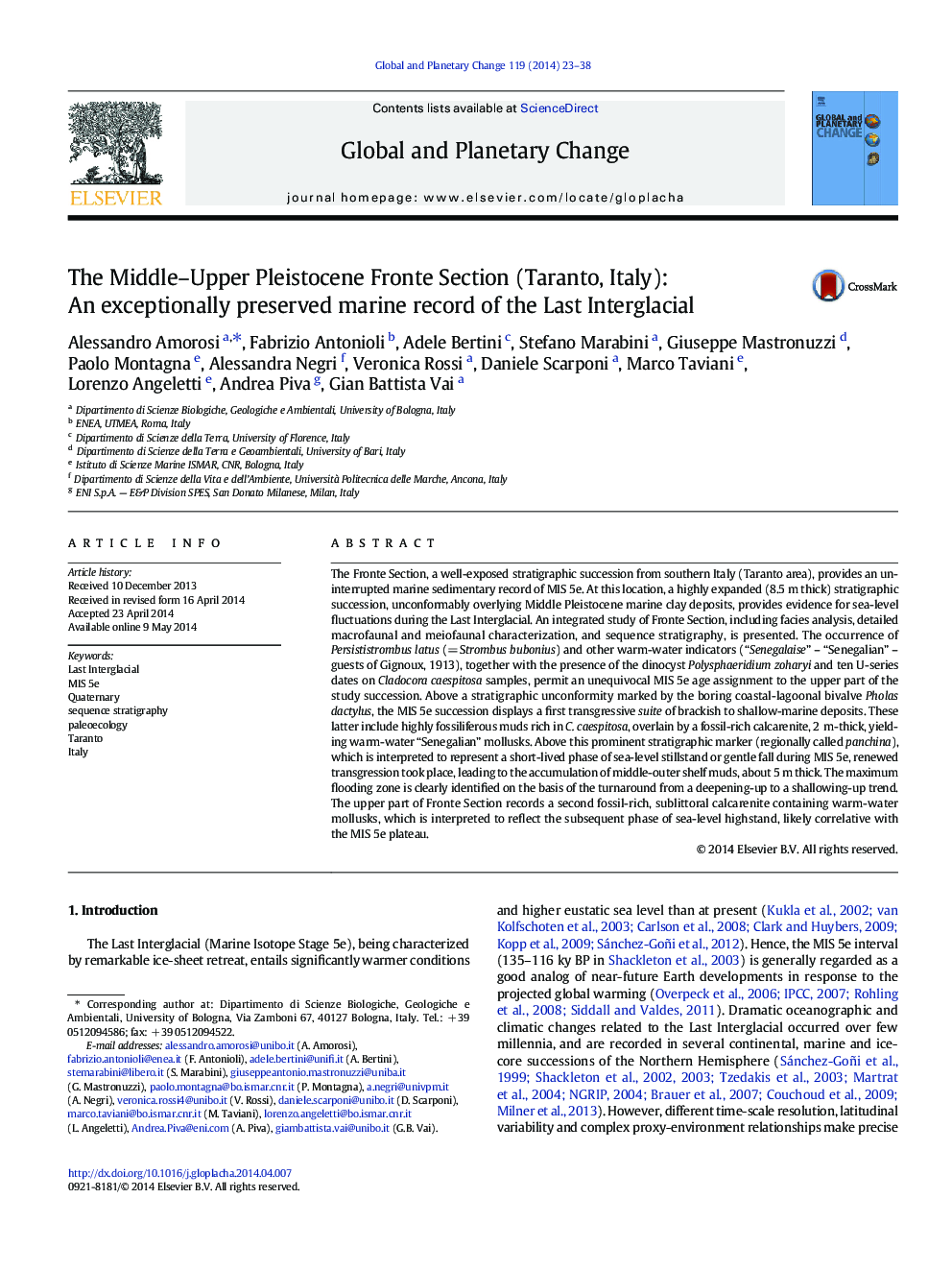| کد مقاله | کد نشریه | سال انتشار | مقاله انگلیسی | نسخه تمام متن |
|---|---|---|---|---|
| 4463418 | 1621662 | 2014 | 16 صفحه PDF | دانلود رایگان |

• We document an exceptionally preserved onshore record of MIS 5e deposits.
• Firm chronology results from the fossil record and U-series ages.
• Rapid sea-level fluctuations are reconstructed during the Last Interglacial.
• A short-lived phase of sea-level stillstand preceded the MIS 5e plateau.
• Two calcarenite marker beds mark distinct phases of coastal progradation.
The Fronte Section, a well-exposed stratigraphic succession from southern Italy (Taranto area), provides an uninterrupted marine sedimentary record of MIS 5e. At this location, a highly expanded (8.5 m thick) stratigraphic succession, unconformably overlying Middle Pleistocene marine clay deposits, provides evidence for sea-level fluctuations during the Last Interglacial. An integrated study of Fronte Section, including facies analysis, detailed macrofaunal and meiofaunal characterization, and sequence stratigraphy, is presented. The occurrence of Persististrombus latus (= Strombus bubonius) and other warm-water indicators (“Senegalaise” – “Senegalian” – guests of Gignoux, 1913), together with the presence of the dinocyst Polysphaeridium zoharyi and ten U-series dates on Cladocora caespitosa samples, permit an unequivocal MIS 5e age assignment to the upper part of the study succession. Above a stratigraphic unconformity marked by the boring coastal-lagoonal bivalve Pholas dactylus, the MIS 5e succession displays a first transgressive suite of brackish to shallow-marine deposits. These latter include highly fossiliferous muds rich in C. caespitosa, overlain by a fossil-rich calcarenite, 2 m-thick, yielding warm-water “Senegalian” mollusks. Above this prominent stratigraphic marker (regionally called panchina), which is interpreted to represent a short-lived phase of sea-level stillstand or gentle fall during MIS 5e, renewed transgression took place, leading to the accumulation of middle-outer shelf muds, about 5 m thick. The maximum flooding zone is clearly identified on the basis of the turnaround from a deepening-up to a shallowing-up trend. The upper part of Fronte Section records a second fossil-rich, sublittoral calcarenite containing warm-water mollusks, which is interpreted to reflect the subsequent phase of sea-level highstand, likely correlative with the MIS 5e plateau.
Journal: Global and Planetary Change - Volume 119, August 2014, Pages 23–38